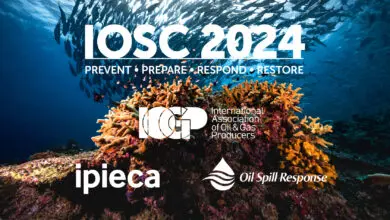
3 questions… on the EU Methane Strategy and how it relates to the global oil and gas industry
In each edition of Pulse, we publish a short interview with an IOGP colleague or committee member. This month’s interview is with Brussels-based Kamila Piotrowksa, IOGP’s Senior Manager for Policy Strategy.
- What is the EU methane strategy about and what is it trying to achieve?
Overall, the strategy outlines a set of actions – legislative and non-legislative – for all sectors that are responsible for anthropogenic methane emissions in the EU. 53% of these emissions come from the agricultural sector, 26% from waste, and 19% from energy.
In 2019, when the European Green Deal was launched, the Commission said energy-related methane emissions would need to be addressed for the EU to reach climate neutrality by 2050. Methane accounts for 10% of EU GHG emissions: it is the second largest source after CO2, which accounts for over 80%. According to the IEA’s methane tracker, EU domestic methane emissions from the oil and gas sector account for 3.3% of global methane emissions from that sector.
IOGP welcomes this holistic approach and looks forward to contributing to the implementation of various actions in the energy sector. As outlined in the strategy, in the short term, we will need to prioritise data collection, monitoring, reporting and verification. We believe this is the right way forward.
- How does it relate to the global industry? What actions are foreseen at the global level?
As the EU contributes only 5% of global methane emissions, the strategy includes several actions aimed at reducing methane emission at global level. In particular, the EU aims to cooperate with the US, Canada, and Mexico as these countries already have robust policies on methane emissions in place.
The Commission will also support (in partnership with the United Nations Environment Programme (UNEP), Climate and Clean Air Coalition (CCAC) and International Energy Agency (IEA) the establishment of an independent international methane emissions observatory.
The observatory would collect, reconcile, verify, and publish anthropogenic methane emissions data at a global level. The observatory would use this data to develop a Methane Supply Index to increase transparency in global methane emissions.
The EU Strategy also stresses that in the absence of significant commitments to reduce methane emissions from international partners, the Commission will consider methane emission reduction targets, standards or other incentives for fossil energy consumed and imported in the EU. We will have to keep an eye out to see how this evolves as this will have an impact on gas delivered to the EU.
- Can you give an example where EU policy has affected the industry outside Europe?
The EU is extremely active at the international level and its international partners often assess EU policy tools before they set their own. For example, the EU REACH (Registration, Evaluation, Authorisation and Restriction of Chemicals) regulation inspired the establishment of the China REACH. The EU REACH has a very wide scope as it applies to all chemical substances that are manufactured, imported, placed on the market or used within the EU, either on their own, in mixtures or in articles with intended release.
I believe that the EU trading partners, and non-EU companies, are watching upcoming initiatives such as CBAM, the Carbon Border Adjustment Mechanism, very carefully. Even though a proposal for a CBAM will be published by the European Commission in mid-2021, it is clear that its implementation is likely to affect companies in every sector, regardless of whether they are established in Europe or not as one of the objectives of this policy tool will be to push both EU and non-EU companies to put on equal footing and to reduce their carbon footprint. This initiative has already triggered a lot of discussion, and for sure will lead to an exciting debate at both EU and global levels.



